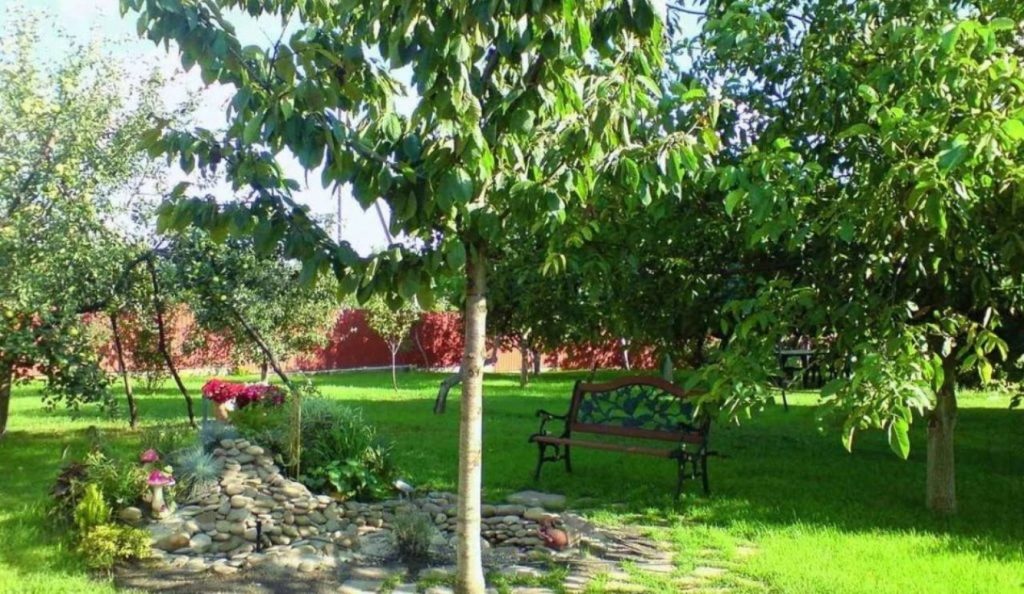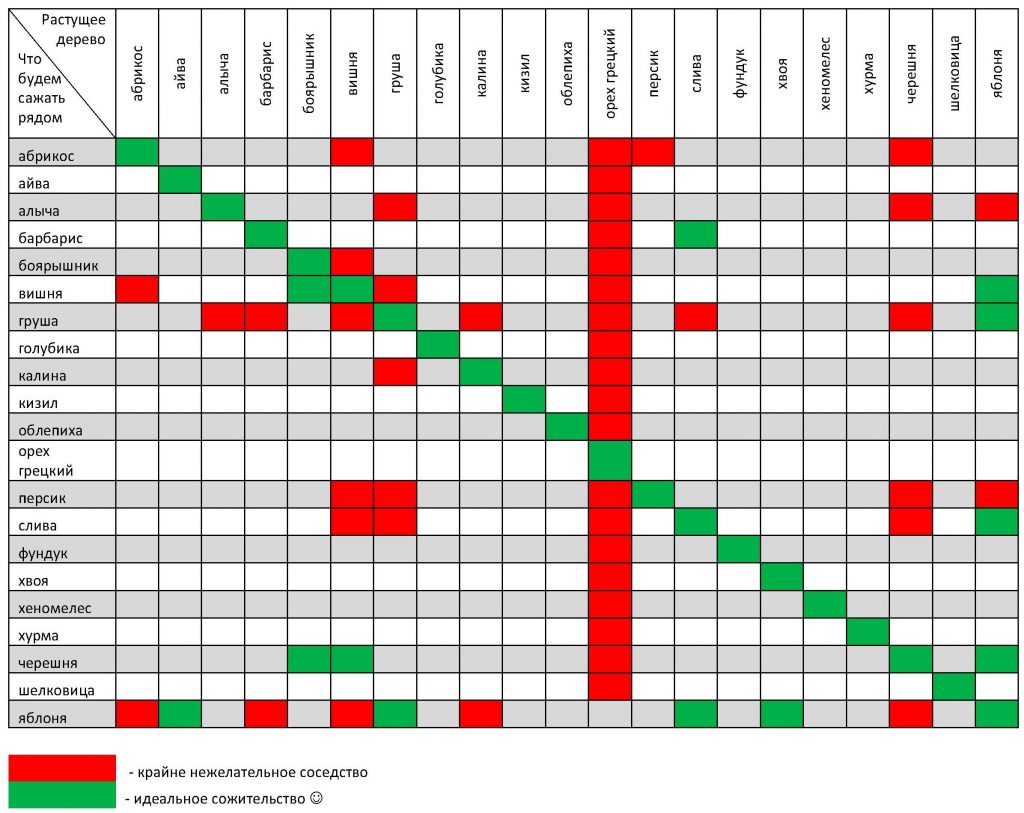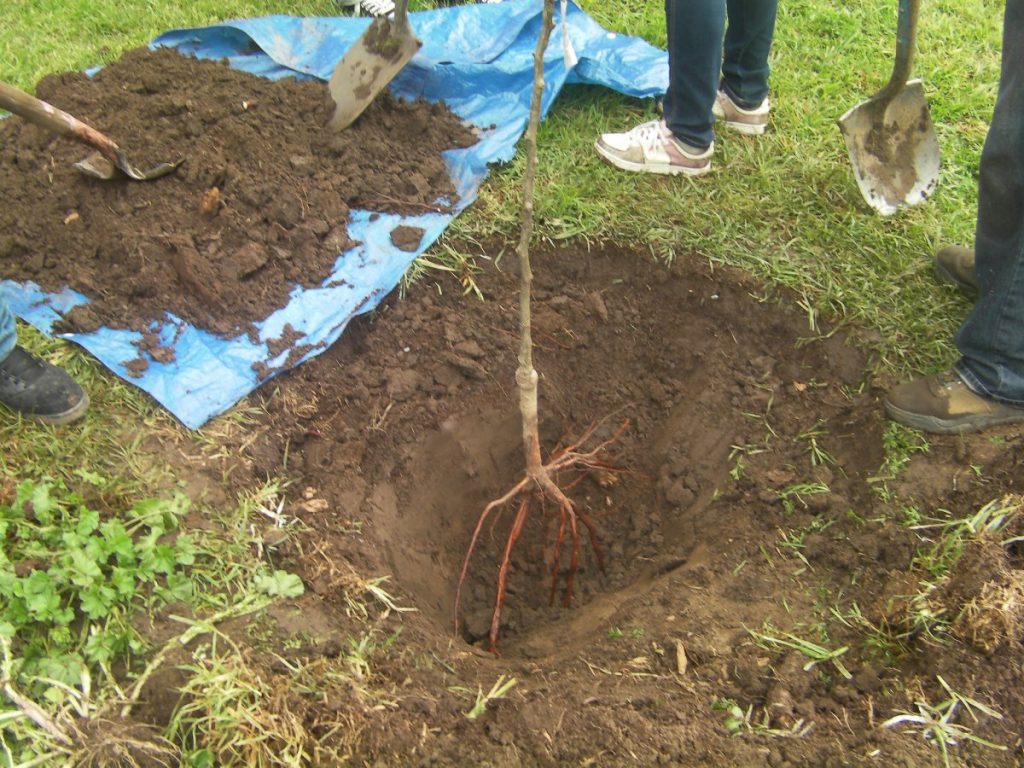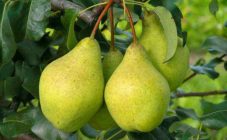Content:
So that the site is not empty, it should be planted with apple trees, plums and cherries. Trees will give shade, in spring they will delight the eye with flowering and aroma, and in autumn they will give natural tasty fruits. However, some features of planting and cultivation need to be learned in advance, so that later you do not wonder why there is no harvest. For example, not everyone knows whether it is possible to plant a plum next to a cherry.
What factors affect the compatibility of fruit trees
When planting several fruits at a close distance, their compatibility must be taken into account; improper distribution on the site can lead to loss of yield or even death of trees. To find out if you can plant a cherry or other fruit tree near a plum, you should study the information about the tree's needs and its characteristics.
When planting different types of fruit trees in the neighborhood, the following factors must be considered:
- Soil requirements. Both cherry and plum trees grow on loose soil with neutral acidity. In addition, they do not deplete the soil much, there are enough nutrients for both.
- Requirements for the illumination of the site. All living things require light, but some cultures need it more than others. When planting trees nearby, you need to take into account their branching, height and crown volume. In this regard, cherry is incompatible with many other plants, since the shadow of the neighbors is oppressed by the cherry bush, which is why it ceases to bear fruit. Neighborhood with plum and apple trees is allowed, since their crowns are not so branched and spreading. At the same time, for a safe neighborhood, it is required to carefully select varieties, their height should not be higher than 3.5 meters.
- What type of fertilizer is more suitable and the frequency of feeding. The need for feeding is different for many fruits. However, these species have almost the same needs and do not require frequent feeding. The best fertilizers for them are nitrogen fertilization, rotten manure, wood ash and humus.
- Landing site. They do not like pits and high slopes and cherries and plums, the compatibility in this regard is ideal. They do not like low plots of land due to the fact that the soil in the hole is constantly wet, and this leads to the fact that the plant becomes more vulnerable to fungal diseases. Increased soil moisture leads to the fact that the root system of the plant begins to rot. It is undesirable to place them on the slopes, since in winter they will be exposed to wind and cold, and these species are not resistant to such conditions.
- Allelopathy is plant compatibility. Some crops release substances that negatively affect neighbors. So, pear and cherry are incompatible. The cherry bush secretes substances due to which the pear is constantly sick and does not bear fruit.
- Diseases. If you plant nearby trees that are susceptible to the same diseases or pests, you can lose the entire crop. The cherry and plum trees have many common diseases. So, both cultures are susceptible to fungal infections, especially coccomycosis. Almost all fruits are susceptible to this disease. And if you take care of them properly, you don't have to worry about it. They are both susceptible to aphid attacks. Aphids appear in the place where there is an anthill nearby, and if you do not allow the formation of large nests, then you do not need to be afraid of this problem.
- Features of watering.The root system of the cherry is at a depth of 45-50 centimeters, and of the plum tree is 40 cm, which requires about one volume of water. They need to be watered so that the soil is moistened, but not flooded.
What crops can be planted next to a plum
Plum is unpretentious and gives a good harvest even under unfavorable conditions. And if, even with good care, it gives a poor harvest, but at the same time the fruits are small and diseased, this means that there is a plant nearby that negatively affects it. With some plants, it is better not to plant plums close, for example, with currants, no matter what kind: black or red, raspberries, birches, conifers, etc.
Best Plum Compatibility With:
- Pear. The pear gets along well with almost all fruits. In addition, the requirements for soil and care are similar for both. The advantage of this neighborhood is that these types of trees are susceptible to various diseases. But such a neighborhood is not for long, since over time the pear survives its neighbors. Therefore, it is almost impossible to grow a strong culture next to a pear.
- Apple tree. Like a pear, it grows and bears fruit well regardless of which fruit plants are nearby. However, a tall apple tree creates a lack of sunlight for its neighbors, and therefore their yield decreases. So that the apple tree does not interfere with the neighbors, it is advisable to plant dwarf varieties. It is better not to place other types of apple trees near the plum tree.
- Cherry. The conditions for caring for these crops are almost the same, both plants love the sun, do not require frequent fertilization and watering. The location of the root system of plants allows them to grow quietly nearby. However, these trees are susceptible to the same diseases and pests, the infection of one tree leads to the disease of the second. But you can grow them in the neighborhood without worrying if you process plants from pests and diseases in time.
- Cherries. It is very similar to cherry, it has the same requirements for soil, planting and maintenance. But sweet cherries do not mix well with other crops. Its crown blocks access to plants that are close to the light, which is why the latter do not grow well and bear fruit.
Also, next to the plum tree, cherry plum and elderberry get along well.
It is important to figure out not only whether it is possible to plant cherries next to the plum, but also what to plant under the plum in the garden in order to rationally use the site. Under a plum crop, it is allowed to plant something low, with an undeveloped root system: celandine, primroses and bulbous flowers. It is forbidden to plant vegetables under the tree. They will not be able to fully develop and mature in the shade. It is generally not advisable to plant vegetables in the garden.
Features of planting a different type of tree next to a plum
It is important to know not only what to plant a plum with, but also how to do it correctly. It is better to plant two different crops at the same time. If one tree is already developed, and the second is not, it will not be able to grow normally due to a lack of nutrients. It is advisable to plant seedlings in autumn and spring, but the best time for planting is mid-autumn.
When planting different types of seedlings in the same area, it is important to know exactly the distance at which they should be planted. If a plum seedling will be located in the same area with an apple tree, the distance between them should be at least 6 meters. If a variety of low apple trees is used, then the distance should not be less than 4.5-5 meters. The same distance is measured when planting a pear seedling.
A cherry seedling must be planted at a distance of 4 m from the plum. If a cherry seedling belongs to bushy varieties, it is allowed to plant it closer, at a distance of 2.5-3 meters. Both require soil that is neutral in acidity, so reduce the acidity of the soil before planting.
What can be planted under the plum: flowers (forget-me-nots, bells, marigolds), celandine and primroses.
When choosing something to plant under a plum tree, it is important to consider the need for moisture. The plum tree does not like highly moist soil.
Going into the garden, you need to study the features and needs of plants in advance. Before planning the location of crops on the site and planting them, it is important to know in advance the features of each species and their characteristics.










